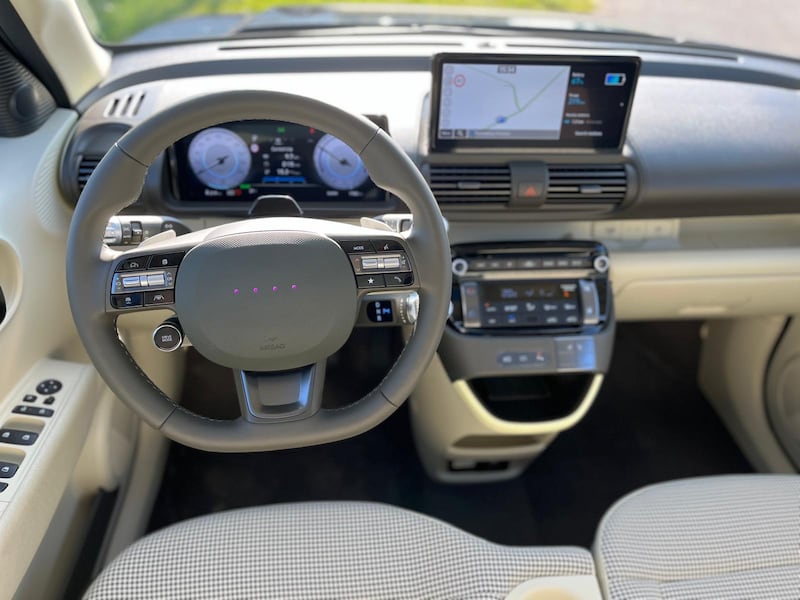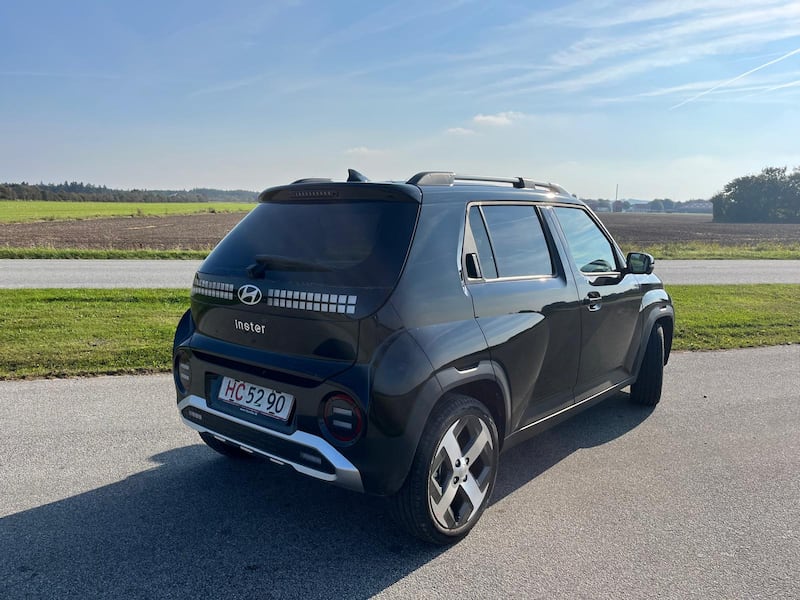Hyundai is introducing a new small electric car to the Irish market at €18,995, making it one of the lowest-priced EVs on the market.
A rival to cars such as the Mini EV and Renault 5, the Hyundai Inster’s price will raise a lot of eyebrows. It significantly undercuts its rivals, while delivering plenty of personality and practicality.
In an age where a regular Toyota Yaris or VW Polo will set you back more than €25,000 and a Corolla €33,000, entering the market below €20,000 with a spacious little EV is going to cause quite a stir. It certainly did at the Nevo EV show in the RDS on Sunday, where it was unveiled for the first time to the Irish public.
It’s also hitting the market before VW’s long-promised “affordable” electric small car the ID.2, giving the Koreans a head start on 2025, a year that looks set to be a battleground for small electric car sales.
The biggest gripes you hear about EVs remain price and range. Yet here you have a smart-looking and spacious hatchback delivering more than 350km in the long-range version that still comes at a competitive price point of €21,995. Even the €18,995 version is promising a range of 300km.
[ The question many Irish drivers are asking: Is an EV right for me?Opens in new window ]
And in terms of spaciousness, at a time when rivals have struggled to marry big battery packs to small cars without sacrificing interior space, Hyundai has pulled off a bit of a masterstroke with the Inster’s interior.

As you would expect, the front seat occupants have ample legroom and the usual array of 10.25-inch touchscreen controls. So far, so regular modern EV. However, in the back, you really do have legroom and headroom for two adults, something that can’t be said of many other small EVs.
The solution Hyundai came up with is simple: putting the two rear seats on sliders. Available on the long-range version, it means you can either increase the rear-seat legroom or the boot space (from 280 litres to 351 litres). That’s certainly not new to the car market, but in the Inster it’s delivered to full effect. To appreciate the space inside this supposedly small car, simply pop down the rear seats – plus the front passenger seat – and you are ready for that visit to Ikea.
[ Myths versus realties — sifting the EV misinformationOpens in new window ]
In fact, even the driver seat folds flat, so you could turn the Inster into overnight accommodation if needs be. And while the boot space can seem small at first, there is a deep well under the boot floor for extra stowage space. It’s just a shame that the sliding rear seats and flat-folding seats aren’t standard on the €18,995 version.

The good news about this car continues on the road. Having managed to deliver cabin space to make the new Renault 5 seem incredibly compromised, you might expect sacrifices to have been made in terms of the battery pack under the floor. However, Hyundai is still offering the Inster with a choice of standard-range 42kWh or long-range 49kWh packs. That’s similar to the 40kWh and 52kWh offerings on the Renault.
In terms of range, the Inster claims more than 300km from the 42kWh pack and 355km from the 49kWh one.
Racy performance is not part of the Inster package. But that doesn’t mean it’s not nippy. In an era where EVs are regularly big heavy crossovers, this Inster feels remarkably nimble and agile around town.

Given its urban natural habitat, the Inster’s steering feel is light, as is the throttle response. Take it out on rural roads and it’s still an easy drive. Push it at speed into a bend and, like any regular hatchback, the tendency is to understeer, but that’s met with a reassuring intervention of stability control. All in, the Inster is surprisingly good, particularly considering its short wheelbase.
In terms of equipment, while the price is low, the specification is not. The entry version, at €18,995, comes with features such as rain-sensor auto wipers, heated seats and heated steering wheel. Move up to the long-range version, you also get a heat pump that helps save battery range in cold weather.
The Inster’s arrival is a welcome treat for a new car market desperately in need of an antidote to the mind-numbing blandness of countless costly crossover EVs.















